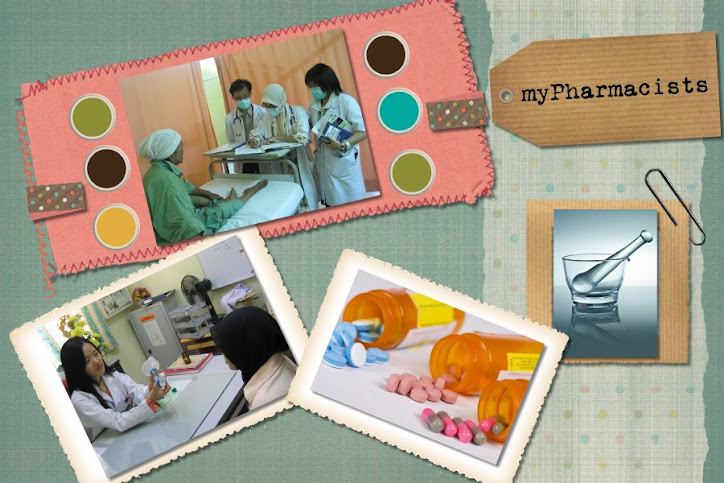

Left: The Bukit Lanjan Community Centre.
Right: Dewan Seri Temuan.


It rained in the morning so it took a while before the crowd started to throng in.


The pharmacy station.
 Busy packing goodie bags, some lucky ones received vitamins for their children.
Busy packing goodie bags, some lucky ones received vitamins for their children.

Left: Simple items such as paracetamol, chlopheniramine, bisacodyl, calamine lotion etc.
Right: Prescription


 We went around pinning badges 'Kenali Ubat Anda. Tanya Ahli Farmasi Anda' on the kids. The kids were really happy to get the badge, they went on to bring their friends and asked us for it.
We went around pinning badges 'Kenali Ubat Anda. Tanya Ahli Farmasi Anda' on the kids. The kids were really happy to get the badge, they went on to bring their friends and asked us for it.[To the older kids] 'ah kak siapa?' 'Doktor' 'Bukan, ah kak ahli farmasi'
(Nevermind that it may not stick into them yet, at least they know that someone other than the doctor is part of the healthcare team. By the way, I think it doesn't help in our effort to enhance the role recognition of pharmacists among the public when the word 'pharmacist' is not exactly easy to remember-for those not-so-educated ones and for kids to pick up.)
We also took the opportunity to speak to some people (targetting the right audience) about how to spot a genuine product (MAL number, hologram & meditag), proper storage of medicine and its importance as well as the products purported to cure certain chronic diseases which can't be advertised.


Left: Awaiting their turns for medical check-up (blood pressure, immunisation among children, body mass index, any other chief complaints by patients)
Right: Phlegm-taking station (for Mantoux test)


Left: The crowd got larger after 10 a.m., so much so that we stayed till 2 p.m. (beyond the scheduled time)
Right: Lucky draws


Traditional performance by the Temuan girls.
Prior to the campaign, the authority could also have urged the people to bring their medicines from home so we can do a medicine cabinet clean-up for them. However, a colleague told me that when the health inspector did a pre-campaign survey, it seemed that the orang asli wasn't that interested in the whole campaign. Indeed, it is a long way towards raising their awareness about health and medicines. Perhaps the government can look into home medication review for these people as well.
Nevertheless, it was a fruitful morning and we shall strive to be better in upcoming activities!
Disclaimer: This is an opinion piece and therefore subjective by nature. The opinions expressed here are the opinions of the individual author and are not necessarily the views of the particular district health office.






